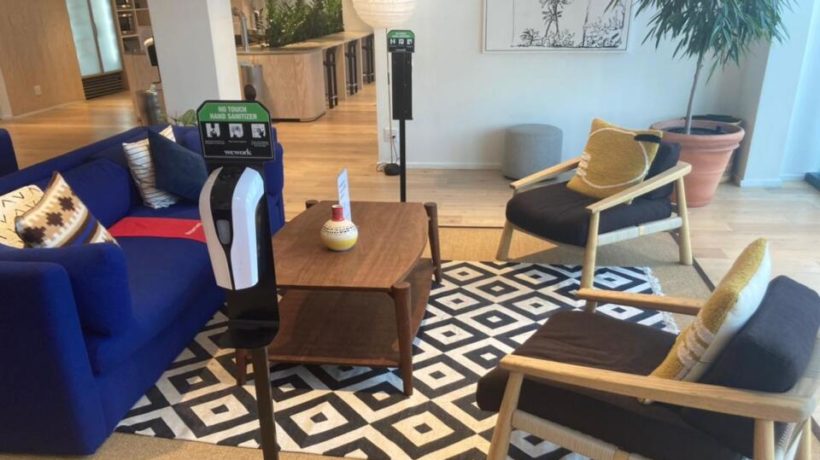Like many companies, manufacturing technology firm Augury ditched its New York City office during the pandemic. With few people coming in, and most work able to be done remotely, paying rent on an empty office was a waste.
But the need for an office didn’t go away completely, and now the company is fitting out a new space in the city. As it does, it’s fundamentally rethinking how the space will work by looking at who will actually be using it. To help guide the new design, the company surveyed its teams to understand how different departments expected to use the space, especially in a more hybrid work mode. “When we were talking about that, we started asking what kind of people will be there?” says Tiffany Millar, Augury’s workplace experience director.
The people who’d be using the office, the company realized, fit into a few distinct categories—locals coming in semi-regularly, for example, or foreign-based workers visiting only rarely. Head counts might range from 20 people to 80, depending on the day, with different types of workers needing different spaces. “At a high level, we broke it down into five personas,” says Millar.
HOME AWAY FROM HOME
The first persona is what Augury calls Home Away From Home, or people who live in the tristate area who may come into the office once or more per week, even if most of their work can still be done remotely. “These were the people that essentially wanted to get out of their tiny New York apartments, or maybe it’s really loud because the kids are home,” says Millar. “It’s about getting away and going into the office,” Millar says.
The spaces designed for the Home Away From persona focus on the social side of work—a nice kitchen area, coffee machines, high-top tables where employees can work but also chat with people they may only see in person every few weeks. “It had a lot to more do with hospitality,” says Millar.
TIME TRAVELER
There’s also the Time Traveler persona, or employees who are based in Europe or Israel and fly in for meetings but need a bit of a time-zone adjustment. The office includes space to store luggage, and even rooms where the jet-lagged can take a nap after landing early in the morning. “While they might not need a conference room at 5 in the morning, they definitely need a place to store their luggage or take a nap,” Millar says.
HERO VISITOR
Another persona is the Hero Visitor, which Millar envisions as investors, board members, and potential clients who may visit quarterly. Spaces designed with this person in mind focus on creating a comfortable and fun environment while also showcasing some of Augury’s technology, which is used to monitor and perform diagnostics on industrial devices. The HVAC system in Augury’s new office will have its technology on display for Hero Visitors to see.
ON-SITE AND FRESH BLOOD
More work-focused personas are On-Site and Fresh Blood—remote workers and new recruits who may be coming to the office for annual meetings or for the first time since being onboarded.
For remote workers in the On-Site category, conference rooms and breakout spaces are being designed into the office to enable easier in-person collaboration after months of working on projects only remotely.
For the Fresh Blood persona—mostly new hires and people being recruited—the design prioritizes way-finding and clear signage. “That space has everything to do with making sure things are easy to find,” says Millar. “It’s very overwhelming when you’re hired remotely and you go to the office for the first time.”
5 PERSONAS, 1 SPACE
Each persona has influenced different parts of the office, which will have two floors. Millar says there’s no space that’s dedicated to one persona only, but rather that each will tend to use some sections of the office more than others. Instead of designing the space with one main user in mind, like Augury’s old office, the new office will include these persona-focused design elements to make it adaptable to whomever happens to be in the office on any given day. While the end result may not look all that different from other pandemic-era office redesigns, it does suggest a new way of rethinking these spaces to better reflect how office work has so thoroughly changed. It’s an evolving concept, and one that the company is creating as it prepares to move into the space early next year.
“There used to be a very clear blueprint of how to build out an office. Post-COVID in a hybrid model, I would say that’s failing,” she says, noting that the 9-to-5, Monday-through-Friday office is no longer relevant to the way companies like Augury work. “Knowing who exists in your space, and understanding the gaps and the holes will help you create a solution before the friction starts to happen.”
The personas that Augury is using to guide its design may ultimately change, Millar acknowledges. She says it will be important to track how the spaces are being used, and by whom, to determine whether the design is meeting the changing needs of the different types of people using the office. The five personas Augury has designed around in 2022 may be completely different a year from now.
“I think we’re at the foundation of using personas,” Millar says. “Next comes issues of human behavior, and we’ll see whether we were right.”







